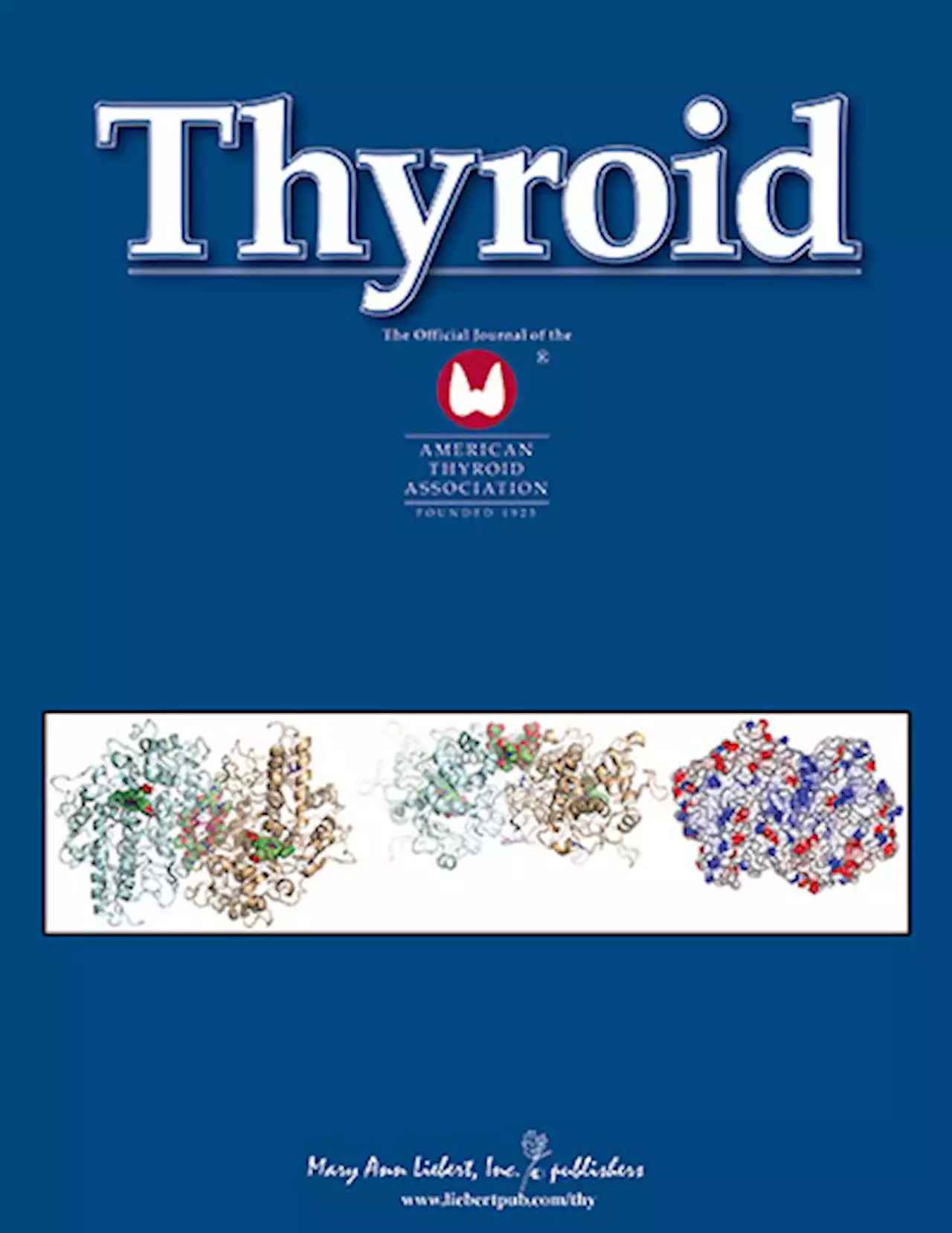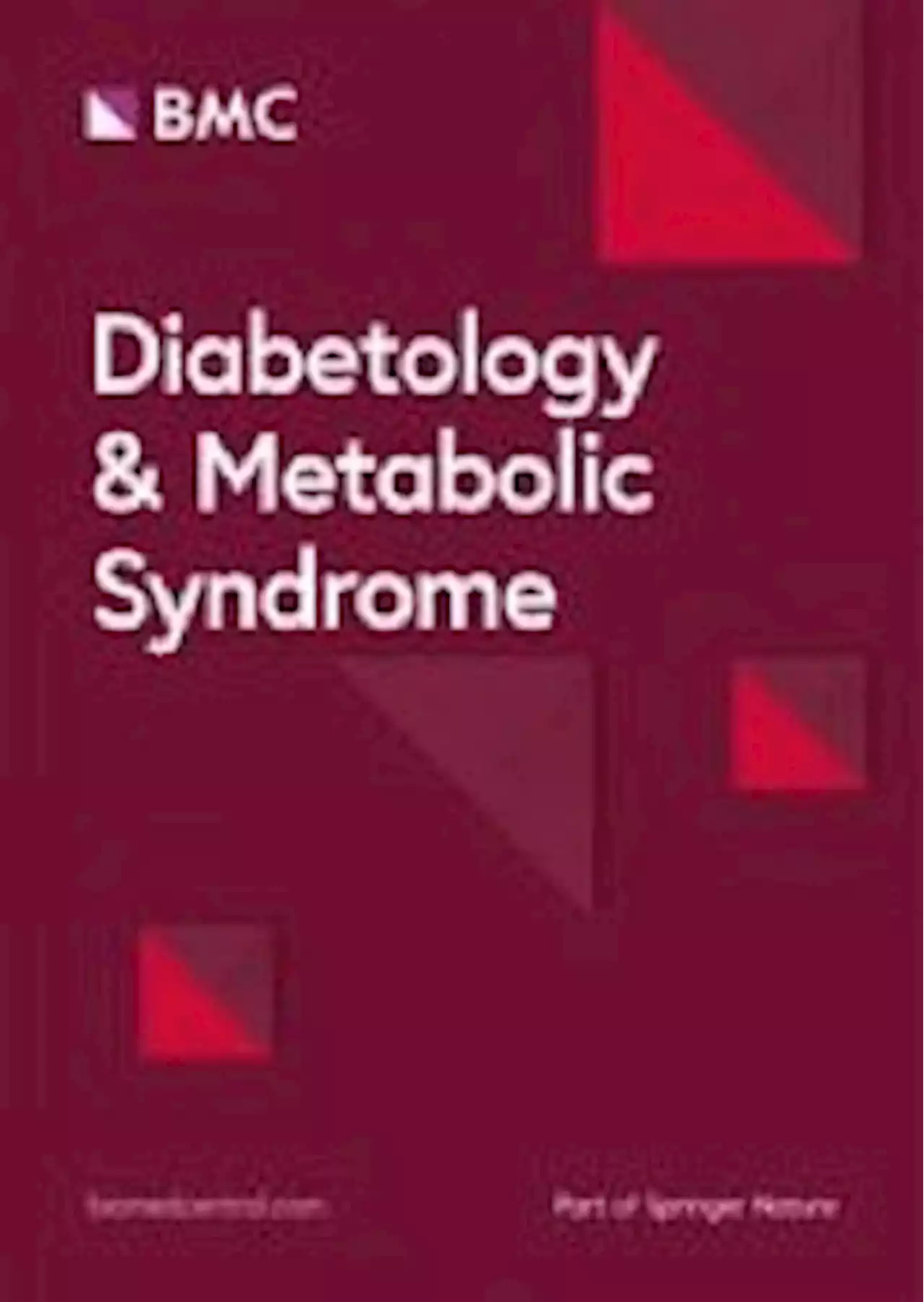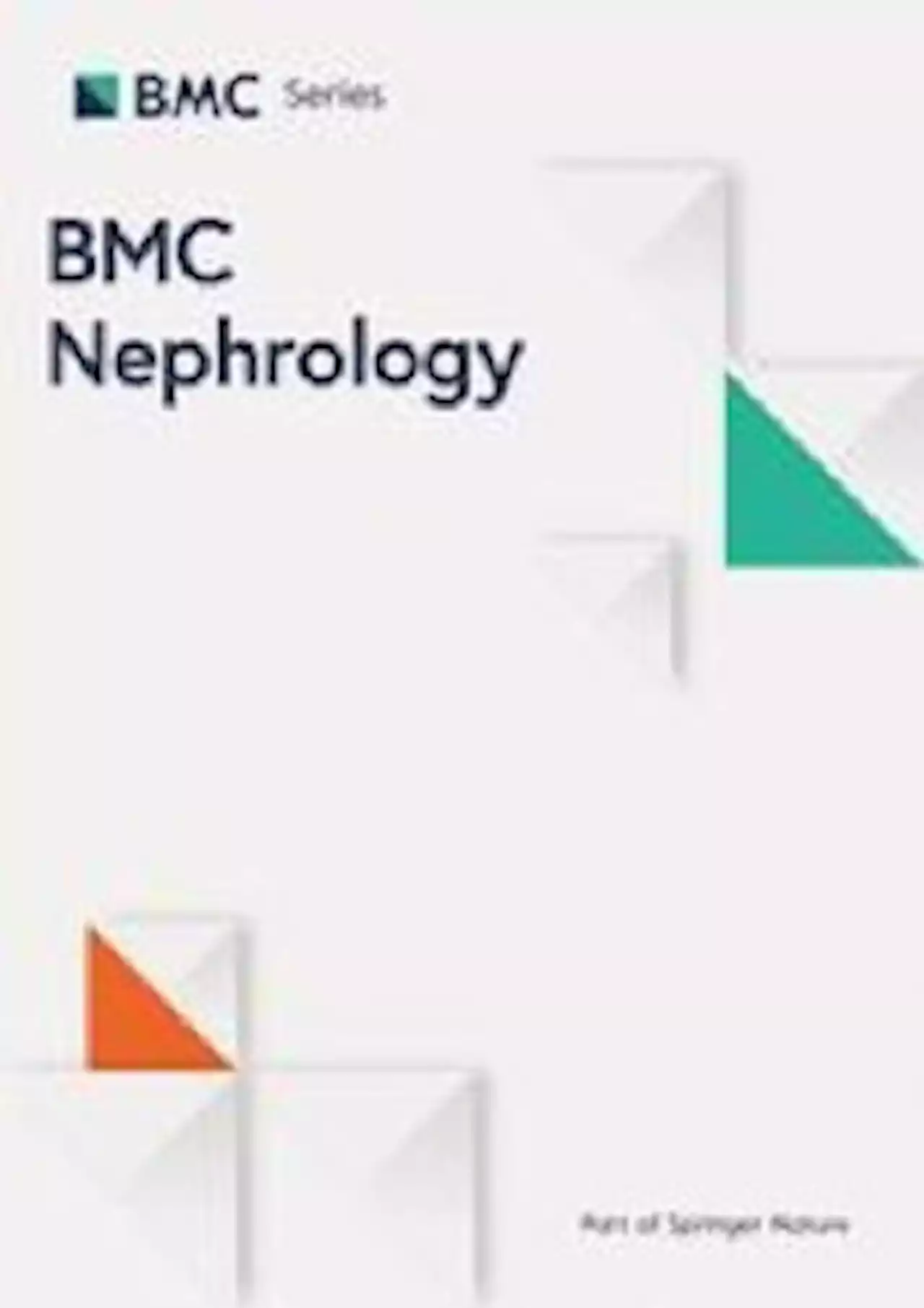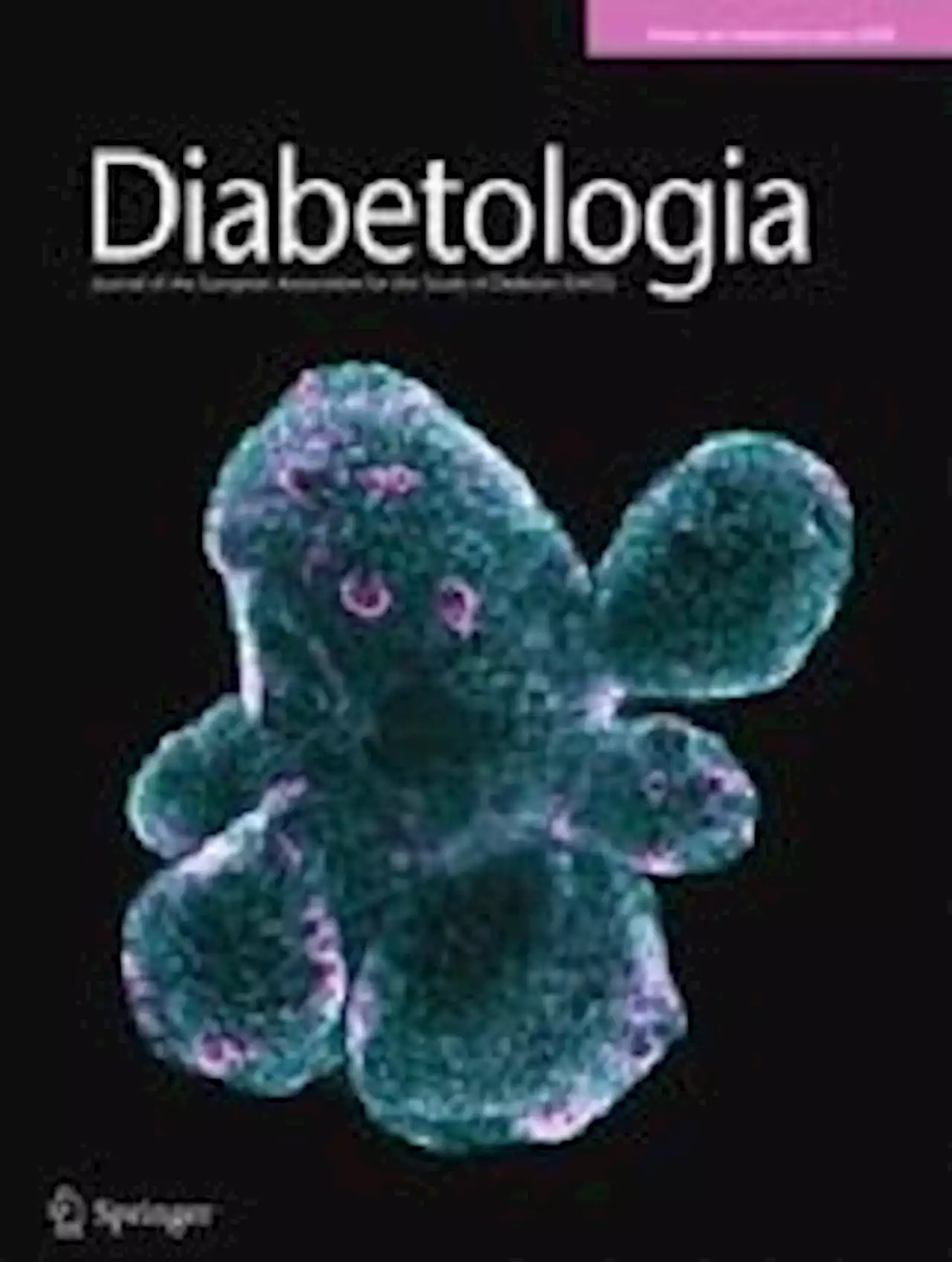Gene provides clues for preventing common diabetes side effect of corticosteroid treatment
NF-κB activation unites metabolic and inflammatory responses in many diseases yet less is known about the role that NF-κB plays in normal metabolism. In this study we investigated howimpacts the beta cell transcriptional landscape and provides network control over glucoregulation.
However,deletion also rendered mice glucose intolerant because of functional loss of insulin secretion. Glucose intolerance was intrinsic to beta cells as βp65KO islets failed to secrete insulin ex vivo in response to a glucose challenge and were unable to restore metabolic control when transplanted into secondary chemical-induced hyperglycaemic recipients.
United Kingdom Latest News, United Kingdom Headlines
Similar News:You can also read news stories similar to this one that we have collected from other news sources.
 Birthweight is associated with clinical characteristics in people with recently diagnosed type 2 diabetes - DiabetologiaAims/hypothesis Low birthweight is a risk factor for type 2 diabetes but it is unknown whether low birthweight is associated with distinct clinical characteristics at disease onset. We examined whether a lower or higher birthweight in type 2 diabetes is associated with clinically relevant characteristics at disease onset. Methods Midwife records were traced for 6866 individuals with type 2 diabetes in the Danish Centre for Strategic Research in Type 2 Diabetes (DD2) cohort. Using a cross-sectional design, we assessed age at diagnosis, anthropomorphic measures, comorbidities, medications, metabolic variables and family history of type 2 diabetes in individuals with the lowest 25% of birthweight (3700 g), compared with a birthweight of 3000–3700 g as reference, using log-binomial and Poisson regression. Continuous relationships across the entire birthweight spectrum were assessed with linear and restricted cubic spline regression. Weighted polygenic scores (PS) for type 2 diabetes and birthweight were calculated to assess the impact of genetic predispositions. Results Each 1000 g decrease in birthweight was associated with a 3.3 year (95% CI 2.9, 3.8) younger age of diabetes onset, 1.5 kg/m2 (95% CI 1.2, 1.7) lower BMI and 3.9 cm (95% CI 3.3, 4.5) smaller waist circumference. Compared with the reference birthweight, a birthweight of |3000 g was associated with more overall comorbidity (prevalence ratio [PR] for Charlson Comorbidity Index Score ≥3 was 1.36 [95% CI 1.07, 1.73]), having a systolic BP ≥155 mmHg (PR 1.26 [95% CI 0.99, 1.59]), lower prevalence of diabetes-associated neurological disease, less likelihood of family history of type 2 diabetes, use of three or more glucose-lowering drugs (PR 1.33 [95% CI 1.06, 1.65]) and use of three or more antihypertensive drugs (PR 1.09 [95% CI 0.99, 1.20]). Clinically defined low birthweight (|2500 g) yielded stronger associations. Most associations between birthweight and clinical characteristics appeared linear, and a hig
Birthweight is associated with clinical characteristics in people with recently diagnosed type 2 diabetes - DiabetologiaAims/hypothesis Low birthweight is a risk factor for type 2 diabetes but it is unknown whether low birthweight is associated with distinct clinical characteristics at disease onset. We examined whether a lower or higher birthweight in type 2 diabetes is associated with clinically relevant characteristics at disease onset. Methods Midwife records were traced for 6866 individuals with type 2 diabetes in the Danish Centre for Strategic Research in Type 2 Diabetes (DD2) cohort. Using a cross-sectional design, we assessed age at diagnosis, anthropomorphic measures, comorbidities, medications, metabolic variables and family history of type 2 diabetes in individuals with the lowest 25% of birthweight (3700 g), compared with a birthweight of 3000–3700 g as reference, using log-binomial and Poisson regression. Continuous relationships across the entire birthweight spectrum were assessed with linear and restricted cubic spline regression. Weighted polygenic scores (PS) for type 2 diabetes and birthweight were calculated to assess the impact of genetic predispositions. Results Each 1000 g decrease in birthweight was associated with a 3.3 year (95% CI 2.9, 3.8) younger age of diabetes onset, 1.5 kg/m2 (95% CI 1.2, 1.7) lower BMI and 3.9 cm (95% CI 3.3, 4.5) smaller waist circumference. Compared with the reference birthweight, a birthweight of |3000 g was associated with more overall comorbidity (prevalence ratio [PR] for Charlson Comorbidity Index Score ≥3 was 1.36 [95% CI 1.07, 1.73]), having a systolic BP ≥155 mmHg (PR 1.26 [95% CI 0.99, 1.59]), lower prevalence of diabetes-associated neurological disease, less likelihood of family history of type 2 diabetes, use of three or more glucose-lowering drugs (PR 1.33 [95% CI 1.06, 1.65]) and use of three or more antihypertensive drugs (PR 1.09 [95% CI 0.99, 1.20]). Clinically defined low birthweight (|2500 g) yielded stronger associations. Most associations between birthweight and clinical characteristics appeared linear, and a hig
Read more »
 Flexible hidden Markov models for behaviour-dependent habitat selection - Movement EcologyBackground There is strong incentive to model behaviour-dependent habitat selection, as this can help delineate critical habitats for important life processes and reduce bias in model parameters. For this purpose, a two-stage modelling approach is often taken: (i) classify behaviours with a hidden Markov model (HMM), and (ii) fit a step selection function (SSF) to each subset of data. However, this approach does not properly account for the uncertainty in behavioural classification, nor does it allow states to depend on habitat selection. An alternative approach is to estimate both state switching and habitat selection in a single, integrated model called an HMM-SSF. Methods We build on this recent methodological work to make the HMM-SSF approach more efficient and general. We focus on writing the model as an HMM where the observation process is defined by an SSF, such that well-known inferential methods for HMMs can be used directly for parameter estimation and state classification. We extend the model to include covariates on the HMM transition probabilities, allowing for inferences into the temporal and individual-specific drivers of state switching. We demonstrate the method through an illustrative example of plains zebra (Equus quagga), including state estimation, and simulations to estimate a utilisation distribution. Results In the zebra analysis, we identified two behavioural states, with clearly distinct patterns of movement and habitat selection (“encamped” and “exploratory”). In particular, although the zebra tended to prefer areas higher in grassland across both behavioural states, this selection was much stronger in the fast, directed exploratory state. We also found a clear diel cycle in behaviour, which indicated that zebras were more likely to be exploring in the morning and encamped in the evening. Conclusions This method can be used to analyse behaviour-specific habitat selection in a wide range of species and systems. A large suite of statistical
Flexible hidden Markov models for behaviour-dependent habitat selection - Movement EcologyBackground There is strong incentive to model behaviour-dependent habitat selection, as this can help delineate critical habitats for important life processes and reduce bias in model parameters. For this purpose, a two-stage modelling approach is often taken: (i) classify behaviours with a hidden Markov model (HMM), and (ii) fit a step selection function (SSF) to each subset of data. However, this approach does not properly account for the uncertainty in behavioural classification, nor does it allow states to depend on habitat selection. An alternative approach is to estimate both state switching and habitat selection in a single, integrated model called an HMM-SSF. Methods We build on this recent methodological work to make the HMM-SSF approach more efficient and general. We focus on writing the model as an HMM where the observation process is defined by an SSF, such that well-known inferential methods for HMMs can be used directly for parameter estimation and state classification. We extend the model to include covariates on the HMM transition probabilities, allowing for inferences into the temporal and individual-specific drivers of state switching. We demonstrate the method through an illustrative example of plains zebra (Equus quagga), including state estimation, and simulations to estimate a utilisation distribution. Results In the zebra analysis, we identified two behavioural states, with clearly distinct patterns of movement and habitat selection (“encamped” and “exploratory”). In particular, although the zebra tended to prefer areas higher in grassland across both behavioural states, this selection was much stronger in the fast, directed exploratory state. We also found a clear diel cycle in behaviour, which indicated that zebras were more likely to be exploring in the morning and encamped in the evening. Conclusions This method can be used to analyse behaviour-specific habitat selection in a wide range of species and systems. A large suite of statistical
Read more »
 ERStruct: a fast Python package for inferring the number of top principal components from whole genome sequencing data - BMC BioinformaticsBackground Large-scale multi-ethnic DNA sequencing data is increasingly available owing to decreasing cost of modern sequencing technologies. Inference of the population structure with such sequencing data is fundamentally important. However, the ultra-dimensionality and complicated linkage disequilibrium patterns across the whole genome make it challenging to infer population structure using traditional principal component analysis based methods and software. Results We present the ERStruct Python Package, which enables the inference of population structure using whole-genome sequencing data. By leveraging parallel computing and GPU acceleration, our package achieves significant improvements in the speed of matrix operations for large-scale data. Additionally, our package features adaptive data splitting capabilities to facilitate computation on GPUs with limited memory. Conclusion Our Python package ERStruct is an efficient and user-friendly tool for estimating the number of top informative principal components that capture population structure from whole genome sequencing data.
ERStruct: a fast Python package for inferring the number of top principal components from whole genome sequencing data - BMC BioinformaticsBackground Large-scale multi-ethnic DNA sequencing data is increasingly available owing to decreasing cost of modern sequencing technologies. Inference of the population structure with such sequencing data is fundamentally important. However, the ultra-dimensionality and complicated linkage disequilibrium patterns across the whole genome make it challenging to infer population structure using traditional principal component analysis based methods and software. Results We present the ERStruct Python Package, which enables the inference of population structure using whole-genome sequencing data. By leveraging parallel computing and GPU acceleration, our package achieves significant improvements in the speed of matrix operations for large-scale data. Additionally, our package features adaptive data splitting capabilities to facilitate computation on GPUs with limited memory. Conclusion Our Python package ERStruct is an efficient and user-friendly tool for estimating the number of top informative principal components that capture population structure from whole genome sequencing data.
Read more »
 Regulation of Thyroid Hormone Levels by Hypothalamic Thyrotropin-Releasing Hormone Neurons | ThyroidBackground: Thyrotropin-releasing hormone (TRH) neurons in the paraventricular nucleus of the hypothalamus (PVN) have been identified as direct regulators of thyrotropin (TSH) and thyroid hormone (TH) levels. They play a significant role in context of negative feedback by TH at the level of TRH gene expression and during fasting when TH levels fall due, in part, to suppression of TRH gene expression. Methods: To test these functions directly for the first time, we used a chemogenetic approach and activated PVN TRH neurons in both fed and fasted mice. Next, to demonstrate the signals that regulate the fasting response in TRH neurons, we activated or inhibited agouti-related protein (AgRP)/neuropeptide Y (NPY) neurons in the arcuate nucleus of the hypothalamus of fed or fasted mice, respectively. To determine if the same TRH neurons responsive to melanocortin signaling mediate negative feedback by TH, we disrupted the thyroid hormone receptor beta (TRβ) in all melanocortin 4 receptor (MC4R) neurons in the PVN. Results: Activation of TRH neurons led to increased TSH and TH levels within 2 hours demonstrating the specific role of PVN TRH neurons in the regulation of the hypothalamic–pituitary–thyroid (HPT) axis. Moreover, activation of PVN TRH neurons prevented the fall in TH levels in fasting mice. Stimulation of AgRP/NPY neurons led to a fall in TH levels despite increasing feeding. Inhibition of these same neurons prevented the fall in TH levels during a fast presumably via their ability to directly regulate PVN TRH neurons via, in part, the MC4R. Surprisingly, TH-mediated feedback was not impaired in mice lacking TRβ in MC4R neurons. Conclusions: TRH neurons are major regulators of the HPT axis and the fasting-induced suppression of TH levels. The latter relies, at least in part, on the activation of AgRP/NPY neurons in the arcuate nucleus. Interestingly, present data do not support an important role for TRβ signaling in regulating MC4R neurons in the PVN. Thus, it
Regulation of Thyroid Hormone Levels by Hypothalamic Thyrotropin-Releasing Hormone Neurons | ThyroidBackground: Thyrotropin-releasing hormone (TRH) neurons in the paraventricular nucleus of the hypothalamus (PVN) have been identified as direct regulators of thyrotropin (TSH) and thyroid hormone (TH) levels. They play a significant role in context of negative feedback by TH at the level of TRH gene expression and during fasting when TH levels fall due, in part, to suppression of TRH gene expression. Methods: To test these functions directly for the first time, we used a chemogenetic approach and activated PVN TRH neurons in both fed and fasted mice. Next, to demonstrate the signals that regulate the fasting response in TRH neurons, we activated or inhibited agouti-related protein (AgRP)/neuropeptide Y (NPY) neurons in the arcuate nucleus of the hypothalamus of fed or fasted mice, respectively. To determine if the same TRH neurons responsive to melanocortin signaling mediate negative feedback by TH, we disrupted the thyroid hormone receptor beta (TRβ) in all melanocortin 4 receptor (MC4R) neurons in the PVN. Results: Activation of TRH neurons led to increased TSH and TH levels within 2 hours demonstrating the specific role of PVN TRH neurons in the regulation of the hypothalamic–pituitary–thyroid (HPT) axis. Moreover, activation of PVN TRH neurons prevented the fall in TH levels in fasting mice. Stimulation of AgRP/NPY neurons led to a fall in TH levels despite increasing feeding. Inhibition of these same neurons prevented the fall in TH levels during a fast presumably via their ability to directly regulate PVN TRH neurons via, in part, the MC4R. Surprisingly, TH-mediated feedback was not impaired in mice lacking TRβ in MC4R neurons. Conclusions: TRH neurons are major regulators of the HPT axis and the fasting-induced suppression of TH levels. The latter relies, at least in part, on the activation of AgRP/NPY neurons in the arcuate nucleus. Interestingly, present data do not support an important role for TRβ signaling in regulating MC4R neurons in the PVN. Thus, it
Read more »
 Endocan in prediabetes, diabetes, and diabetes-related complications: a systematic review and meta-analysis - Diabetology & Metabolic SyndromeBackground Diabetes is one of the chronic conditions with a high burden all around the world. Macrovascular and microvascular involvement are among the common mechanisms by which diabetes can impact patients’ lives. Endocan as an inflammatory endothelial biomarker has been shown to increase in several communicable and non-communicable diseases. Herein, we aim to investigate the role of endocan as a biomarker in diabetes as a systematic review and meta-analysis. Methods International databases, including PubMed, Web of Science, Scopus, and Embase were searched for relevant studies assessing blood endocan in diabetic patients. Estimation of the standardized mean difference (SMD) and 95% confidence interval (CI) for comparison of circulating endocan levels between diabetic patients and non-diabetic controls were conducted through random-effect meta-analysis. Results Totally, 24 studies were included, assessing 3354 cases with a mean age of 57.4 ± 8.4 years. Meta-analysis indicated that serum endocan levels were significantly higher in diabetic patients in comparison with healthy controls (SMD 1.00, 95% CI 0.81 to 1.19, p-value | 0.01). Moreover, in the analysis of studies with only type-2 diabetes, the same result showing higher endocan was obtained (SMD 1.01, 95% CI 0.78 to 1.24, p-value | 0.01). Higher endocan levels were also reported in chronic diabetes complications such as diabetic retinopathy, diabetic kidney disease, and peripheral neuropathy. Conclusion Based on our study’s findings, endocan levels are increased in diabetes, however, further studies are needed for assessing this association. In addition, higher endocan levels were detected in chronic complications of diabetes. This can help researchers and clinicians in recognizing disease endothelial dysfunction and potential complications.
Endocan in prediabetes, diabetes, and diabetes-related complications: a systematic review and meta-analysis - Diabetology & Metabolic SyndromeBackground Diabetes is one of the chronic conditions with a high burden all around the world. Macrovascular and microvascular involvement are among the common mechanisms by which diabetes can impact patients’ lives. Endocan as an inflammatory endothelial biomarker has been shown to increase in several communicable and non-communicable diseases. Herein, we aim to investigate the role of endocan as a biomarker in diabetes as a systematic review and meta-analysis. Methods International databases, including PubMed, Web of Science, Scopus, and Embase were searched for relevant studies assessing blood endocan in diabetic patients. Estimation of the standardized mean difference (SMD) and 95% confidence interval (CI) for comparison of circulating endocan levels between diabetic patients and non-diabetic controls were conducted through random-effect meta-analysis. Results Totally, 24 studies were included, assessing 3354 cases with a mean age of 57.4 ± 8.4 years. Meta-analysis indicated that serum endocan levels were significantly higher in diabetic patients in comparison with healthy controls (SMD 1.00, 95% CI 0.81 to 1.19, p-value | 0.01). Moreover, in the analysis of studies with only type-2 diabetes, the same result showing higher endocan was obtained (SMD 1.01, 95% CI 0.78 to 1.24, p-value | 0.01). Higher endocan levels were also reported in chronic diabetes complications such as diabetic retinopathy, diabetic kidney disease, and peripheral neuropathy. Conclusion Based on our study’s findings, endocan levels are increased in diabetes, however, further studies are needed for assessing this association. In addition, higher endocan levels were detected in chronic complications of diabetes. This can help researchers and clinicians in recognizing disease endothelial dysfunction and potential complications.
Read more »
 Bradykinin B2 receptor blockade and intradialytic hypotension - BMC NephrologyIntroduction Intradialytic hypotension (IDH) is a common clinical complication and is associated with increased morbidity and mortality in patients undergoing maintenance hemodialysis (MHD). The pathogenesis of IDH has been attributed to the rapid reduction of plasma volume during hemodialysis and the inadequate compensatory mechanisms in response to hypovolemia, such as the lack of vasoconstriction. This may be due to the increased production of vasodilators, such as bradykinin. In this study we test the hypothesis that bradykinin B2 receptor blockade prevents intradialytic hypotension. Methods We performed a post-hoc analysis of a double-blind, placebo-controlled, randomized, 2 × 2 crossover clinical trial comparing the continuous infusion of icatibant, a bradykinin B2 receptor blocker, and placebo during hemodialysis. Icatibant or placebo was infused for 30 min before and during hemodialysis in 11 patients on MHD. Results Seven of the patients had IDH, defined as a reduction of systolic blood pressure equal to or greater than 20 mmHg during hemodialysis. Stratified analysis, based on the presence of IDH, revealed that icatibant prevented the decrease in blood pressure compared to placebo in patients with IDH [blood pressure at average nadir (2.5 h after hemodialysis): Placebo,114.3 ± 8.9 vs. icatibant, 125.6 ± 9.1 mmHg, mean ± S.E.M]. Icatibant did not affect blood pressure in the group of patients without IDH. Conclusion Bradykinin B2 receptor blocker may prevent the occurrence of IDH. Further studies should evaluate the hemodynamic effects of icatibant during hemodialysis and the symptomatology associated with IDH.
Bradykinin B2 receptor blockade and intradialytic hypotension - BMC NephrologyIntroduction Intradialytic hypotension (IDH) is a common clinical complication and is associated with increased morbidity and mortality in patients undergoing maintenance hemodialysis (MHD). The pathogenesis of IDH has been attributed to the rapid reduction of plasma volume during hemodialysis and the inadequate compensatory mechanisms in response to hypovolemia, such as the lack of vasoconstriction. This may be due to the increased production of vasodilators, such as bradykinin. In this study we test the hypothesis that bradykinin B2 receptor blockade prevents intradialytic hypotension. Methods We performed a post-hoc analysis of a double-blind, placebo-controlled, randomized, 2 × 2 crossover clinical trial comparing the continuous infusion of icatibant, a bradykinin B2 receptor blocker, and placebo during hemodialysis. Icatibant or placebo was infused for 30 min before and during hemodialysis in 11 patients on MHD. Results Seven of the patients had IDH, defined as a reduction of systolic blood pressure equal to or greater than 20 mmHg during hemodialysis. Stratified analysis, based on the presence of IDH, revealed that icatibant prevented the decrease in blood pressure compared to placebo in patients with IDH [blood pressure at average nadir (2.5 h after hemodialysis): Placebo,114.3 ± 8.9 vs. icatibant, 125.6 ± 9.1 mmHg, mean ± S.E.M]. Icatibant did not affect blood pressure in the group of patients without IDH. Conclusion Bradykinin B2 receptor blocker may prevent the occurrence of IDH. Further studies should evaluate the hemodynamic effects of icatibant during hemodialysis and the symptomatology associated with IDH.
Read more »
